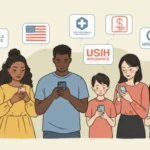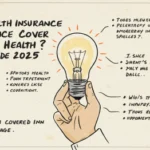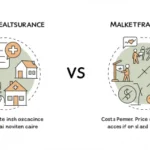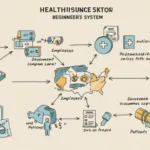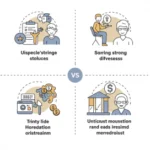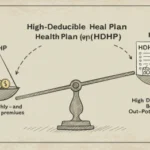In a country where healthcare costs continue to soar, being uninsured in America represents far more than just a gap in coverage—it’s a financial precipice that can transform a medical emergency into a lifetime of debt. Despite significant improvements in insurance coverage since the implementation of the Affordable Care Act, millions of Americans still navigate the healthcare system without insurance, facing consequences that extend far beyond their individual medical bills. The true cost of being uninsured encompasses immediate financial burdens, long-term health consequences, delayed care, and broader societal impacts that ripple through communities and the economy as a whole.
The Current Landscape of Uninsured Americans
As of 2023, 7.6% or 25.0 million Americans of all ages did not have health insurance, representing a significant decrease from previous years but still constituting a substantial population facing healthcare access challenges. This figure includes 3.9% or 2.8 million children who lack coverage, highlighting that the uninsured crisis affects Americans across all age groups.
The distribution of uninsured individuals varies dramatically by state, with Texas having the most uninsured residents, with 18% of the state uninsured. Oklahoma follows them with a rate of 13.8%, and then Georgia with 12.7%. These disparities often reflect state-level policy decisions, economic conditions, and the availability of employer-sponsored insurance in different regions.
While the overall uninsured rate has remained relatively stable in recent years, the rate of uninsurance in 2023 was 8.0%, a statistically insignificant change from the 7.9% uninsured rate in 2022, indicating that progress in expanding coverage has plateaued. This stagnation is concerning given the ongoing challenges that uninsured Americans face in accessing affordable healthcare.
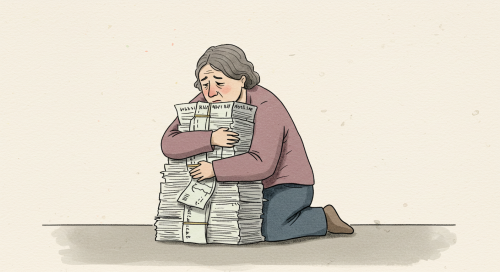
Immediate Financial Consequences
Out-of-Pocket Medical Expenses
Being uninsured means paying the full cost of medical care, which can be staggering even for routine services. Without the negotiated rates that insurance companies secure with healthcare providers, uninsured patients often face inflated “chargemaster” prices that can be two to ten times higher than what insured patients pay for the same services.
A routine doctor’s visit that might cost an insured person a $25 copay could cost an uninsured individual $200 to $400. Emergency room visits, which uninsured Americans are more likely to use for non-emergency care due to lack of access to primary care, can result in bills ranging from $1,000 to $5,000 or more for relatively minor conditions.
Prescription medications present another significant financial burden. Without insurance coverage or pharmacy benefit programs, uninsured individuals pay full retail prices for medications, which can be prohibitively expensive for those managing chronic conditions like diabetes, hypertension, or mental health disorders.
The Healthcare Affordability Crisis
Nearly half (49%) of uninsured adults say they have difficulty affording health care costs, more than double the share of those with private insurance (21%). This stark difference illustrates how the absence of insurance coverage creates an insurmountable barrier to healthcare access for millions of Americans.
The affordability crisis is compounded by the fact that 24.7% postponed seeking care due to cost, creating a dangerous cycle where minor health issues escalate into major medical emergencies due to delayed treatment. This deferral of care not only jeopardizes individual health outcomes but also increases overall healthcare costs when conditions require more intensive and expensive treatment.
The Medical Debt Crisis
Scale of the Problem
Medical debt has become a defining feature of the American healthcare landscape, with people in the United States owing at least $220 billion in medical debt. This astronomical figure represents not just numbers on a balance sheet but real financial hardship for millions of families who face impossible choices between healthcare and other basic necessities.
The burden of medical debt affects a staggering number of Americans, with an estimated 100 million Americans who have amassed nearly $200 billion in collective medical debt. This widespread crisis affects people across income levels and insurance statuses, though the uninsured face disproportionate challenges in managing these debts.
Bankruptcy and Financial Devastation
Medical debt serves as a primary driver of personal bankruptcy in the United States. As many as 66.5% of people who file for bankruptcy blame medical bills as the primary cause. As many as 550,000 people file for bankruptcy each year for this reason. This represents a uniquely American phenomenon, as medical bankruptcy is virtually unknown in other developed countries with universal healthcare systems.
The financial devastation extends beyond formal bankruptcy proceedings. About 1 in 8 medically indebted Americans owe $10,000 or more, according to the KFF poll. Although most expect to repay their debt, 23% said it will take at least three years; 18% said they don’t expect to ever pay it off. These prolonged debt burdens create lasting financial instability that can affect housing, education, and other life opportunities.
For lower-income Americans, the impact is particularly severe. Over half (55%) of those with health care debt whose household income is less than $40,000 say they used up all or most of their savings due to their debt, eliminating their financial safety net and leaving them vulnerable to future emergencies.
Health Consequences of Being Uninsured
Delayed and Foregone Care
The lack of insurance coverage creates significant barriers to accessing preventive care, routine medical services, and timely treatment for health conditions. Uninsured individuals are more likely to delay seeking medical attention until conditions become severe, often resulting in emergency room visits that could have been prevented with earlier intervention.
This pattern of delayed care has serious health implications. Conditions like diabetes, hypertension, and cancer are more likely to go undiagnosed or untreated in uninsured populations, leading to worse health outcomes, increased disability, and higher mortality rates. The absence of regular preventive care means that treatable conditions often progress to more serious stages before being detected.
Emergency Room Utilization
Uninsured Americans rely heavily on emergency departments for medical care, using them not only for true emergencies but also for routine care that they cannot access elsewhere. While federal law requires hospitals to provide emergency care regardless of insurance status or ability to pay, this safety net is inadequate for comprehensive healthcare needs.
Emergency departments are not designed to provide continuity of care, manage chronic conditions, or offer preventive services. The episodic nature of emergency care means that uninsured patients often receive fragmented treatment that fails to address underlying health issues or provide ongoing disease management.
Mental Health and Substance Abuse
Mental health services and substance abuse treatment are particularly challenging for uninsured individuals to access. These services often require ongoing treatment and can be expensive without insurance coverage. The lack of access to mental health care contributes to higher rates of untreated depression, anxiety, and substance use disorders among the uninsured population.
The stigma associated with mental health conditions, combined with financial barriers, creates a double burden that prevents many uninsured Americans from seeking necessary treatment. This can lead to worsening mental health conditions, increased disability, and higher rates of suicide and substance abuse-related deaths.
Hidden Costs and Societal Impact
Healthcare System Inefficiency
The presence of a large uninsured population creates significant inefficiencies in the healthcare system. Hospitals and healthcare providers must absorb the cost of uncompensated care, which is then passed on to other patients and insurers through higher prices. This cost-shifting mechanism means that everyone pays more for healthcare to subsidize care for the uninsured.
Emergency departments, which serve as the de facto safety net for uninsured Americans, are often overcrowded and strained by patients seeking non-emergency care. This misuse of emergency resources increases costs and can delay care for true medical emergencies.
Economic Productivity Losses
Uninsured Americans are more likely to experience poor health outcomes, disability, and premature death, all of which reduce economic productivity. The inability to manage chronic conditions effectively leads to more sick days, reduced work capacity, and earlier retirement from the workforce.
The stress and financial burden of being uninsured also affect job mobility and entrepreneurship. Many Americans remain in jobs they might otherwise leave simply to maintain health insurance benefits, a phenomenon known as “job lock.” This reduces labor market flexibility and innovation.
Impact on Families and Communities
The effects of being uninsured extend beyond the individual to affect entire families and communities. Medical debt can force families to make difficult choices between healthcare and other necessities like housing, education, or food. Children in families struggling with medical debt may face reduced educational opportunities and increased stress.
Communities with high rates of uninsured residents often see reduced economic activity as families redirect money from consumption to healthcare expenses or debt payments. Local healthcare providers may struggle financially due to high levels of uncompensated care, potentially reducing access to care for all residents.
Demographic Disparities
Income and Employment Status
The uninsured population is disproportionately composed of low and moderate-income individuals who earn too much to qualify for Medicaid but too little to afford private insurance, even with marketplace subsidies. Many work in jobs that don’t offer health benefits or work part-time or temporary positions that exclude them from employer-sponsored coverage.
Young adults, particularly those aged 18-26 who are no longer eligible for coverage under their parents’ plans, represent a significant portion of the uninsured population. This age group often perceives themselves as healthy and may view insurance as unnecessary, not fully understanding the financial risks they face.
Racial and Ethnic Disparities
Significant disparities exist in insurance coverage rates among different racial and ethnic groups. Hispanic Americans and Native Americans experience higher rates of being uninsured compared to white Americans, reflecting broader inequalities in income, employment opportunities, and access to employer-sponsored insurance.
These disparities contribute to worse health outcomes and greater financial hardship in communities of color, perpetuating cycles of poverty and poor health that can persist across generations.
Policy Implications and Future Outlook
ACA Marketplace Challenges
While the Affordable Care Act significantly expanded access to health insurance, gaps remain in coverage and affordability. The extended premium tax credits are set to expire at the end of 2025. If Congress fails to extend the enhanced tax credits, marketplace enrollees will experience an average premium increase of $705; 4 million more people are projected to become uninsured.
This potential policy change highlights the ongoing vulnerability of insurance coverage expansion efforts and the need for sustained political commitment to maintaining affordable coverage options.
Medicaid Expansion
Ten states have still not expanded Medicaid under the ACA, leaving significant coverage gaps for low-income adults. These non-expansion states have higher rates of uninsured residents and more limited options for low-income individuals to access affordable coverage.
The decision by some states not to expand Medicaid creates a coverage gap where individuals earn too much to qualify for traditional Medicaid but too little to qualify for marketplace subsidies, leaving them without affordable insurance options.
Innovative Solutions
Some states and communities are experimenting with innovative approaches to expand coverage and reduce the number of uninsured residents. These include state-based coverage programs, public option plans, and enhanced premium assistance programs that go beyond federal ACA provisions.
Healthcare providers are also developing new models of care delivery that can serve uninsured patients more effectively, including community health centers, direct primary care arrangements, and charitable care programs.
Individual Strategies for the Uninsured
Seeking Financial Assistance
Uninsured individuals facing medical bills should be aware of available financial assistance programs. Most hospitals are required to offer charity care or financial hardship programs for patients who cannot afford to pay their bills. These programs can significantly reduce or eliminate medical debt for qualifying patients.
Pharmaceutical companies often offer patient assistance programs that provide free or reduced-cost medications for individuals who meet income requirements. These programs can make essential medications more affordable for uninsured patients managing chronic conditions.
Healthcare Shopping and Price Transparency
While challenging, uninsured patients can sometimes reduce their healthcare costs by shopping for services and negotiating prices. Some healthcare providers offer discounts for cash payments or uninsured patients. Urgent care centers and retail clinics often provide more affordable alternatives to emergency departments for non-emergency medical needs.
Price transparency tools and websites can help uninsured patients compare costs for procedures and services, though comprehensive price information remains limited in many markets.
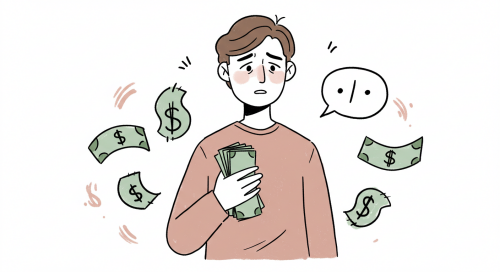
Preventive Care and Health Maintenance
Given the high cost of medical care when uninsured, investing in preventive care and health maintenance becomes even more critical. Community health centers, public health departments, and free clinics often provide preventive services at reduced costs or on sliding fee scales.
Maintaining good health through proper diet, exercise, and avoiding risky behaviors becomes not just a health imperative but a financial necessity for uninsured individuals who cannot afford to treat preventable conditions.
Conclusion: The True Price of America’s Uninsured Crisis
The real cost of being uninsured in America extends far beyond individual medical bills to encompass a complex web of financial, health, and social consequences that affect not only the uninsured but society as a whole. With 25 million Americans lacking health insurance coverage, the crisis represents both a humanitarian challenge and an economic inefficiency that the nation continues to grapple with.
The financial devastation caused by medical debt, the health consequences of delayed and foregone care, and the broader societal costs of an uninsured population demonstrate that this issue requires sustained attention and comprehensive solutions. While progress has been made in expanding coverage through the ACA and other initiatives, significant gaps remain that leave millions of Americans vulnerable to financial ruin due to medical expenses.
Addressing the uninsured crisis requires a multifaceted approach that includes policy solutions to expand affordable coverage, healthcare system reforms to reduce costs and improve efficiency, and individual and community-level interventions to help those who remain uninsured access necessary care. The stakes are high not just for the 25 million Americans who lack coverage, but for the entire healthcare system and economy that bears the hidden costs of their uninsured status.
As healthcare costs continue to rise and new challenges emerge, the importance of ensuring that all Americans have access to affordable health insurance becomes not just a moral imperative but an economic necessity. The true cost of being uninsured in America is ultimately a cost that society as a whole cannot afford to ignore.

Hi, I’m Hibiki — the writer behind HealthManual.net.
I cover health insurance news, wellness tips, and insightful analysis of pharmaceutical and healthcare stocks. My goal is to simplify complex topics and make health and finance information more accessible to everyone.
Thanks for reading — I hope you find the content helpful and reliable.

